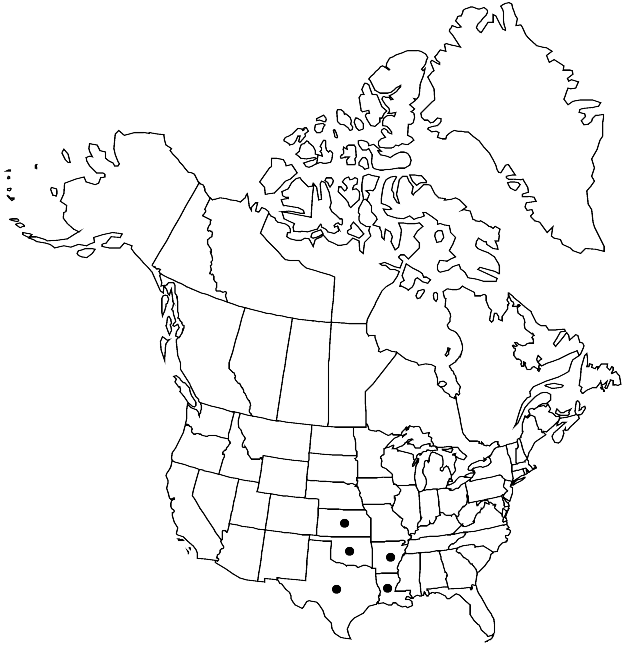Streptanthus hyacinthoides
Bot. Mag. 63: plate 3516. 1836.
Annuals; usually glabrous throughout (sometimes stem bases pubescent). Stems unbranched or branched distally, 2.8–13 dm. Basal leaves not seen. Cauline leaves (shortly petiolate or sessile); blade usually linear to linear-lanceolate, rarely oblanceolate, 2.5–16 cm × 2–7(–20) mm, (smaller distally), base not auriculate, margins entire. Racemes ebracteate. Fruiting pedicels divaricate-ascending, (straight), 3–10 mm. Flowers (slightly zygomorphic, horizontal to pendent); calyx campanulate; sepals purple, lanceolate, 7–11 mm, not keeled; petals deep purple to magenta or whitish (with purple veins), 13–20 mm, blade 7–12 × 1–4 mm, margins not crisped, claw 5–12 mm, (strongly recurved); stamens in 3 unequal pairs; filaments: abaxial pair (connate less than 1/2 their length), 8–14 mm, lateral pair 4–7 mm, adaxial pair (connate ca. 3/4 their length), 7–10 mm; anthers: abaxial and lateral pairs fertile, 2–3 mm, adaxial pairs sterile, 1–1.5 mm; gynophore 0.3–3 mm. Fruits divaricate-ascending, smooth, straight or slightly curved inwards, flattened, 3.7–11.2 cm × 1.5–2 mm; valves each with prominent midvein; replum straight; ovules 90–120 per ovary; style 0.3–1.5 mm; stigma subentire. Seeds broadly ovoid, 1.5–1.8 × 1–1.3 mm; wing 0.1–0.25 mm, continuous.
Phenology: Flowering May–Jun.
Habitat: Sandy soils of prairies, open glades in woods, grassy roadsides
Elevation: 100-800 m
Distribution

Ark., Kans., La., Okla., Tex.
Discussion
Streptanthus hyacinthoides is widespread in eastern Texas and central and northwestern Oklahoma; in Arkansas it is restricted to Nevada and Ouachita counties; in Kansas to Barber and Comanche counties; and in Louisiana to Bienville, Caddo, Natchitoches, and Winn parishes.
Selected References
None.